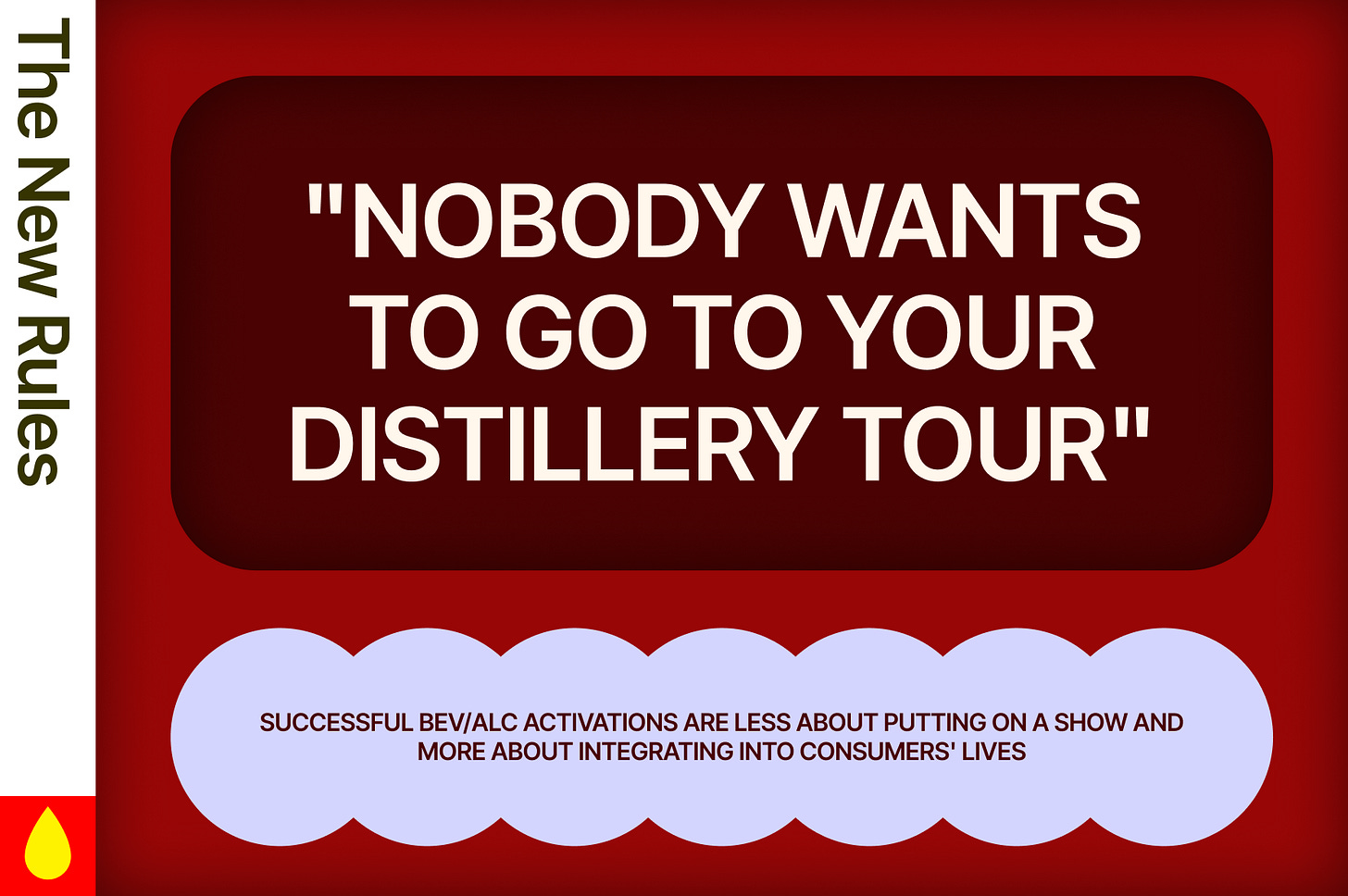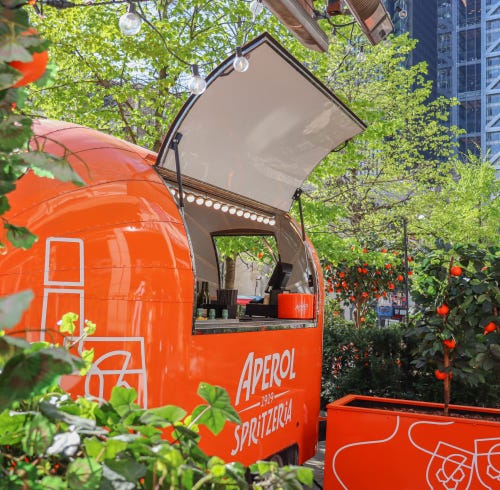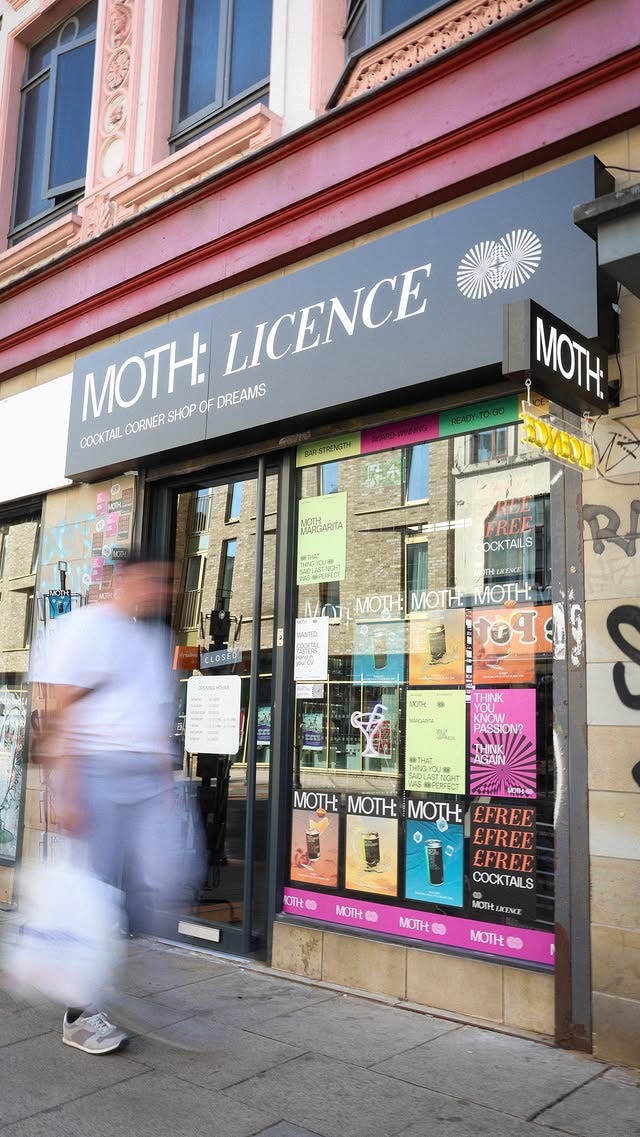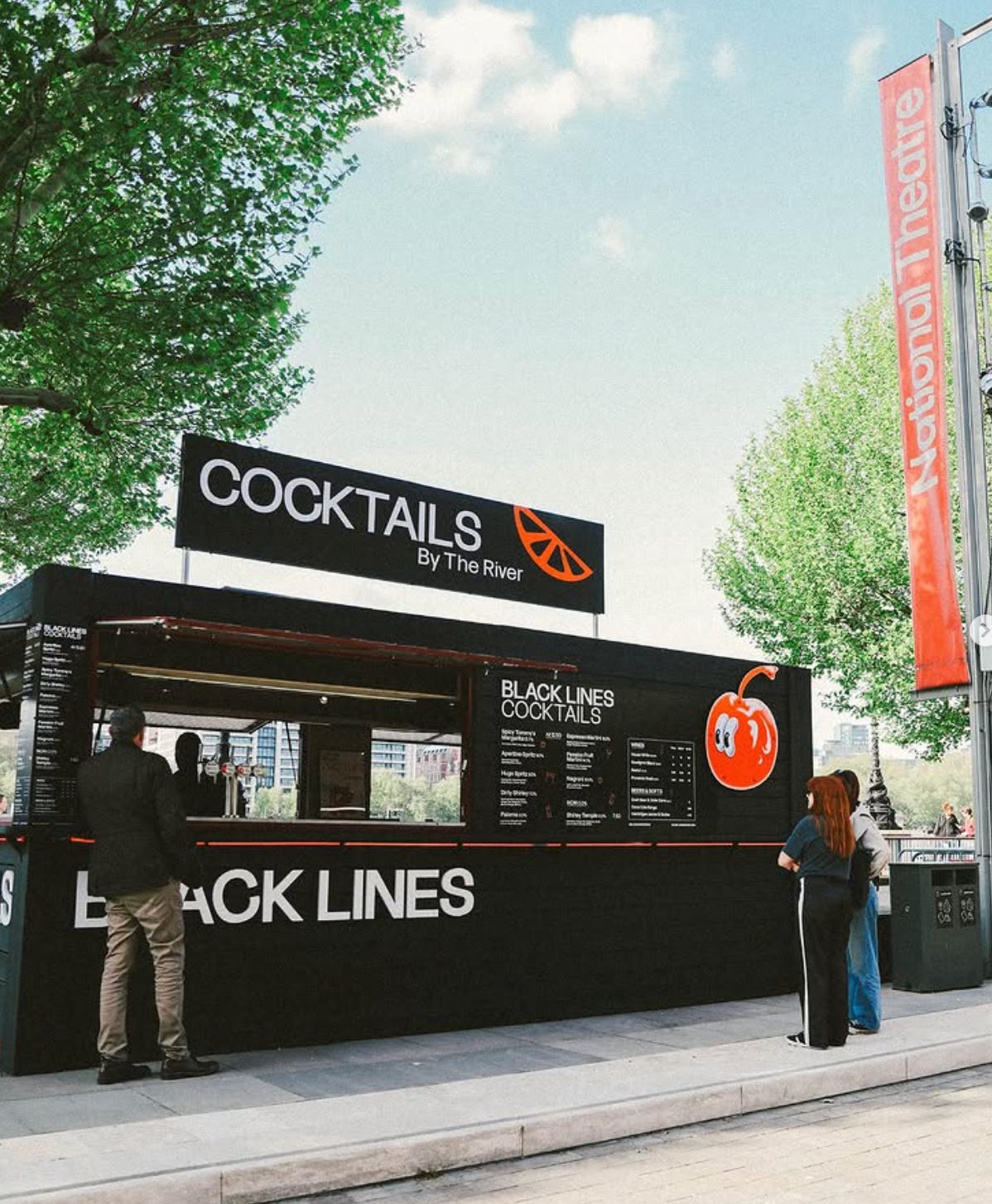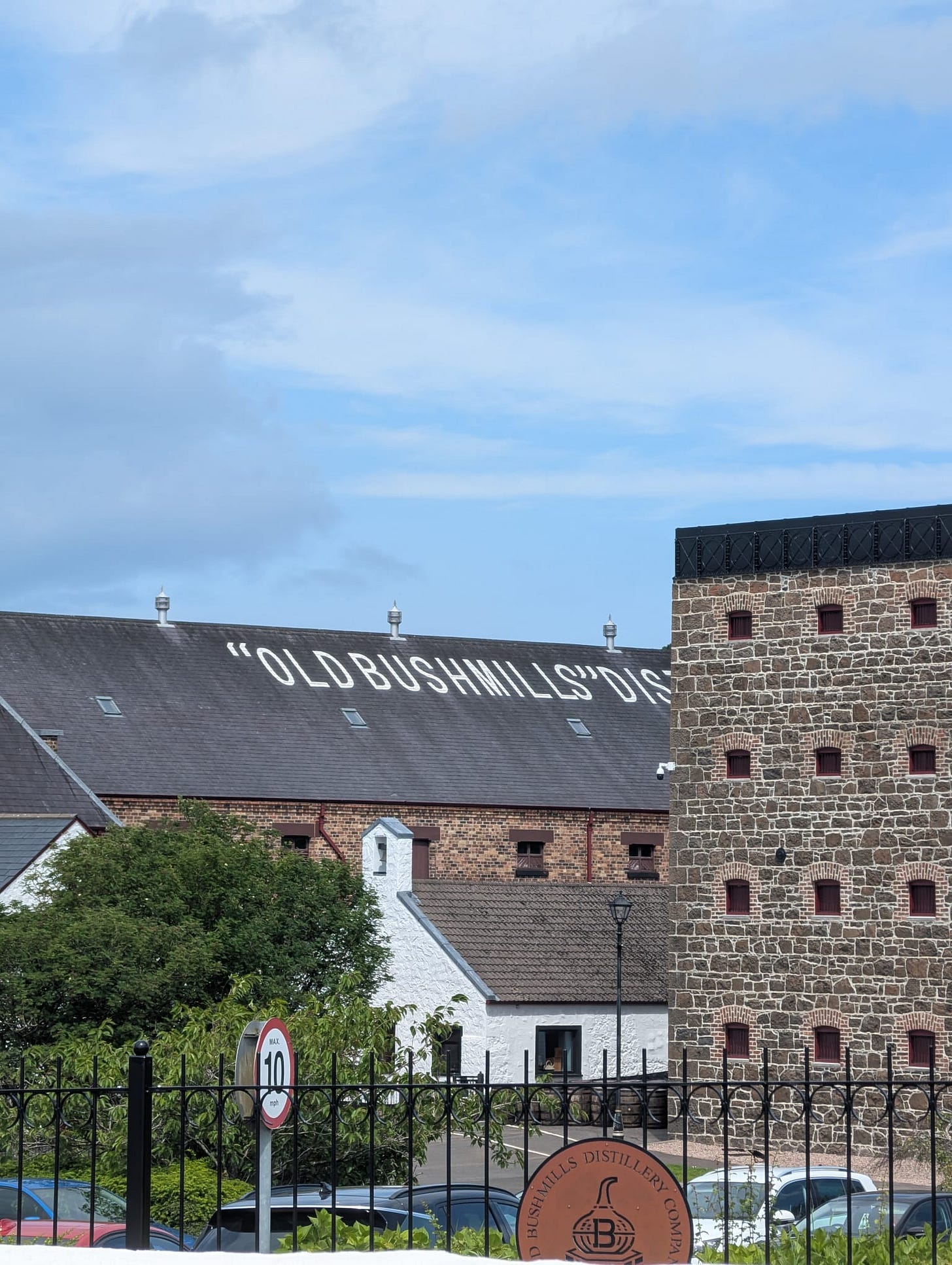"Nobody wants to go to your distillery tour"
Successful bev/alc activations are less about putting on a show and more about integrating into consumers' lives
Welcome to New Rules Features! This is a series exploring the trends, ideas, and strategies shaping brand building in the bev/alc space. This edition comes from our London-based editor, Emma Tucker.
I was walking my dog, with my husband, last summer and as we turned the corner and left the park there was a surprise waiting: a tiny van with the boot popped open, sat under a bright orange Aperol Spritz parasol.
What, I asked myself, were they doing here? Down a back-street, away from the main traffic, and apparently being served out the back of some guy’s car? Obviously, I immediately ordered a spritz.
Aperol actually has a more ‘official’ brand activation outside food court Eataly, next to London’s Liverpool Street station. There’s Aperol blankets, orange trees, an ‘Instagram-worthy Aperol Spritz greenery back drop’, bright orange street lamps… all intensely and aggressively on-brand. But something about it never feels that appealing to me.
These two experiences tell us something about how people want brands to show up in their lives. Over to Nihilo co-founder Emunah Winer for some more context:
I think the main shift that we’re seeing now is brands meeting consumers where the people are, and not vice versa. Brands are going to the consumer; the consumers are not coming to the brand. The old model may have been about inviting consumers ‘into the brand world’ but that doesn’t cut it anymore.
At one point, brands could rely on their ‘pull’ factor. They’d launch a pop-up or create an experiential activation and sit back and wait for people to show up. And those people were choosing to show up.
The difference now is that brands can’t assume anyone is rushing to go see them. As empirical evidence: not long ago, I walked past a pop-up activation in central London, hosted by a major European energy brand – the kind of brand everyone in the UK has heard of. No-one was inside, no-one was going in, and no-one was even remotely seduced by the PR people promising free coffees as a lure.
Why? Most people don’t want to make an appointment to experience a brand. They don’t want to do extra leg-work. They want it to just be there. Seamless. Natural.
The captivating brands today are focusing more on integrating themselves into the landscape and atmosphere of the end-consumer. This, at its core, is culture – starting at the bottom. Nobody wants to go to your distillery tour; they want to sit on their couch and feel like you’re there next to them.
Take canned cocktail brand MOTH’s recent pop-up in Manchester: the MOTH License. It didn’t need to announce itself with Insta-backdrops or a day-glo truck. It blended right into the road, in a format the UK knows and loves: the trusty corner shop. Passersby could pop in, grab a free can, maybe have a sandwich, and then continue about their lives. As Emunah says:
People live on social, people send each other memes, brands are integrating in. In larger, more experiential ways this might look like a brand collabing with a grocery store instead of a celebrity. Consumers go to grocery stores. It’s a part of their lives. Celebrities are not.
I spotted bottled cocktail brand Black Lines adopting a similar approach in London – opening a cocktail bar by the river that serves spritzes, margaritas and negronis to the hundreds of passersby tramping up and down the South Bank every day. They’re not pushing their way into our lives, they’re just showing up where the thirsty people already are. It makes total sense.
That doesn’t mean bev experiences need to be boring. For a masterclass, let’s go back to 2021, when skate brand Palace and beer brand Stella Artois took over a pub in London and a bar in New York, dubbing them ‘Palace Artois’ pubs. It was playful. It was ironic. And it felt right. Sure, they created special signage and branded glassware, but it slotted in so seamlessly. And that seamlessness doesn’t require huge budgets or finely polished branding – it means being smart and being relevant.
As Emunah says:
Botivo shows up to brand activations with a piano people can play; Gap became cool again by linking up with Boiler Room, a collaboration that logically makes no sense. Though these examples are expensive to produce, experiential activations don’t have to be. North Face had a dad of three wear their jacket into a river to promote it; Red Bull scattered un-purchased, empty cans on concert venue floors as a marketing tactic.
Let’s finish this piece by thinking about Bushmills: a 241-year-old whisky brand with a distillery in Northern Ireland’s County Antrim. Its guided distillery tours are a fixture on any NI travel itinerary, and promise to take visitors through the production process. You can also book onto a private tasting experience.
As you walk up to the distillery you go through the village (also called Bushmills) and past a fair number of empty and boarded-up shops. I know, because I was there in June and the whole time I thought to myself: why isn’t Bushmills using these spaces?
I – and, I’m sure, many others – have absolutely no interest in being hauled round a distillery tour. I don’t care about copper stills or triple distillation. But I could very easily be tempted to have a wee dram or a whiskey cocktail in a tiny Bushmills speakeasy-style bar, if there happened to be one as I was walking by.
And therein lies the difference between brands relying on the pull factor, and brands integrating themselves into people’s lives, and showing up where they are. Doing that doesn’t mean Instagram-friendly backdrops, or celebrities, or slick production values. It just needs a little bit of strategic thinking.
People want clever, not perfect.
Until next time.



